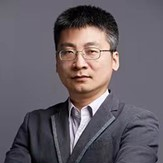Wide-Bandgap Semiconductor Materials, Devices and Systems
A special issue of Crystals (ISSN 2073-4352). This special issue belongs to the section "Materials for Energy Applications".
Deadline for manuscript submissions: closed (11 January 2024) | Viewed by 12082
Special Issue Editors
Interests: wide bandgap semiconductor device and system integration; cmos; novel ultra-high density memory and electronic ceramics
Special Issue Information
Dear Colleagues,
We are glad to run a Special Issue with Crystals. We invite you to share your impressive and distinctive research works with us, and will truly appreciate your contribution.
This Special Issue is titled ‘Wide-Bandgap Semiconductor Materials, Devices and Systems’, and the materials include but are not limited to GaN, Ga2O3, SiC, ZnO, AlN, and diamond. More specifically, the scope of this Issue covers five common key technological research topics for the study of material properties, device performance and system design of wide-bandgap semiconductors. The topics of interest are as follows: Material epitaxy (epitaxial structure design, advanced epitaxial methods, material and electrical characterization, etc.); microelectronic fabrication processes (etching process research, ohmic contact improvement, breakdown voltage enhancement, gate dielectric engineering, etc.); novel device design and application (monolithic integrated devices, vertical devices, multi-gate devices, sensors, ferroelectric devices, etc.); semiconductor device physics (device reliability, failure analysis, modeling, etc.); and advanced system integration (power supply systems, power amplifier architecture, circuit efficiency improvement, advanced packaging, etc.). The above topics are just for your reference. Any related topics not mentioned above are also acceptable for this Special Issue.
We would be grateful if we received your manuscripts before 30 June 2023, which will leave sufficient time for the review stage. The peer review committee will carefully consider each manuscript and reply to you as soon as possible. If you have any questions, please do not hesitate to contact us.
Prof. Dr. Hongyu Yu
Prof. Dr. Qing Wang
Guest Editors
Manuscript Submission Information
Manuscripts should be submitted online at www.mdpi.com by registering and logging in to this website. Once you are registered, click here to go to the submission form. Manuscripts can be submitted until the deadline. All submissions that pass pre-check are peer-reviewed. Accepted papers will be published continuously in the journal (as soon as accepted) and will be listed together on the special issue website. Research articles, review articles as well as short communications are invited. For planned papers, a title and short abstract (about 100 words) can be sent to the Editorial Office for announcement on this website.
Submitted manuscripts should not have been published previously, nor be under consideration for publication elsewhere (except conference proceedings papers). All manuscripts are thoroughly refereed through a single-blind peer-review process. A guide for authors and other relevant information for submission of manuscripts is available on the Instructions for Authors page. Crystals is an international peer-reviewed open access monthly journal published by MDPI.
Please visit the Instructions for Authors page before submitting a manuscript. The Article Processing Charge (APC) for publication in this open access journal is 2600 CHF (Swiss Francs). Submitted papers should be well formatted and use good English. Authors may use MDPI's English editing service prior to publication or during author revisions.
Keywords
- wide bandgap semiconductor
- materials growth and applications
- advanced process technology
- group III-V power electronics and RF devices
- novel materials and devices
- device design and modeling
- semiconductor device physics
- RF devices and power electronics reliability
- RF circuit, system and module
- advanced packaging and packaging trends






